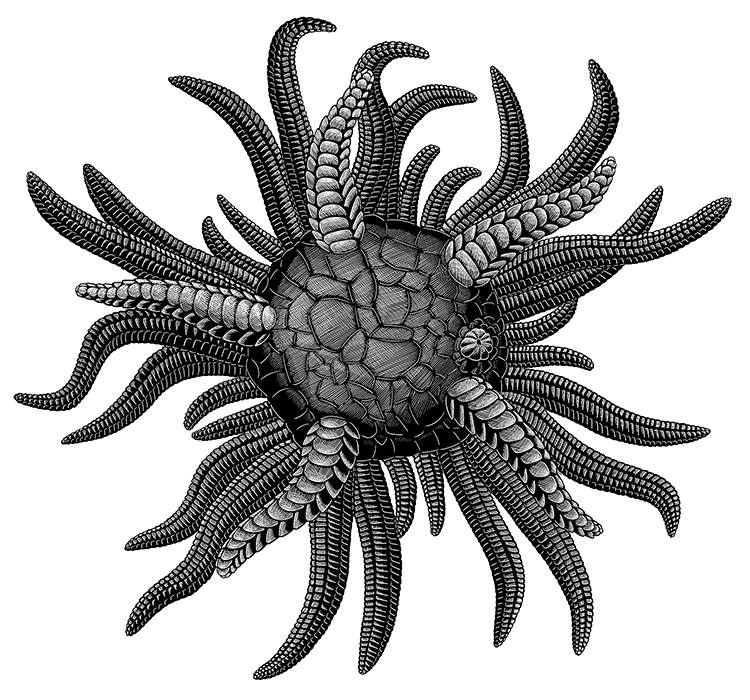Ophiocistioids were a group of weird and poorly-understood echinoderms which lived between the early Ordovician and the late Triassic, about 475 to 233 million years ago. Related to modern sea cucumbers, they were squat dome-shaped creatures with clusters of tentacle-like scaly tube feet, and have been compared to the bizarre fictional monsters of H. P. Lovecraft’s Cthulhu Mythos.
So it’s not really surprising that one of them has been named Sollasina cthulhu.
But unlike its namesake this “monster” was actually tiny, only 3cm across (1.2″). It was discovered in the fine-grained Wenlock limestones of the UK, and dates to the late Silurian, about 430 million years ago. Its exceptionally well-preserved state makes it the first ophiocistioid with known fossilized internal structures, including evidence of its water vascular system.
Unfortunately this high level of detail comes at a cost — the tiny Wenlock fossils are preserved in three dimensions inside hard concretions and are almost impossible to extract or interpret from split-open cross-sections, and highly expensive CT scans don’t give a good enough resolution. So the only way to actually “see” them is to destroy them, grinding away a tiny layer at a time and taking a photograph at each step, then assembling a digital reconstruction from the hundreds of slices.

